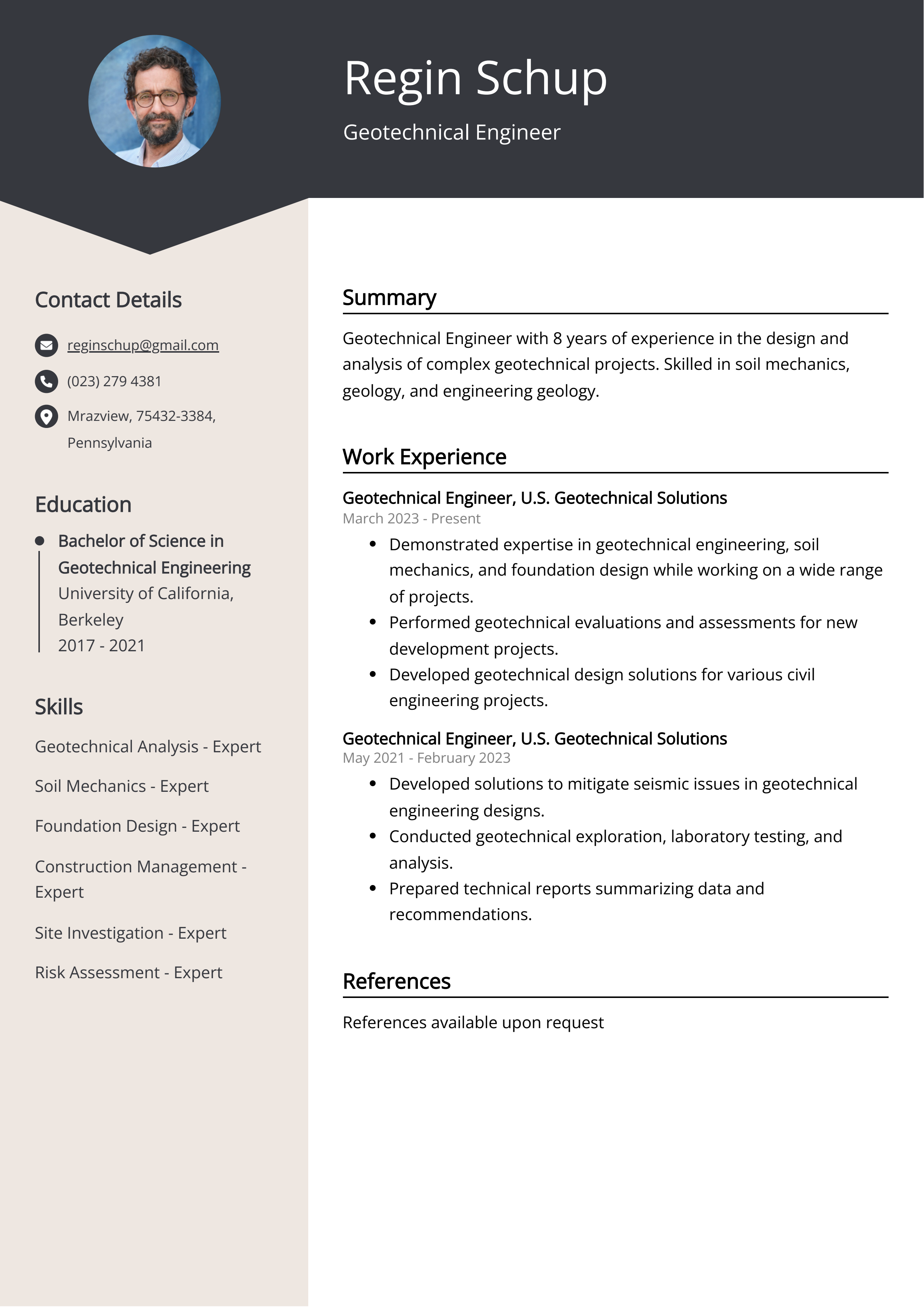All About Geotheta
All About Geotheta
Blog Article
The Facts About Geotheta Revealed
Table of ContentsExcitement About GeothetaGeotheta for DummiesSome Known Questions About Geotheta.The Geotheta StatementsThe Ultimate Guide To Geotheta

They perform site examinations, accumulate samples, carry out lab examinations, and evaluate data to examine the suitability of the ground for construction projects - Geo Tech Engineer. Based upon their searchings for, geotechnical designers give recommendations for structure layout, slope stability, maintaining frameworks, and mitigation of geotechnical threats. They team up with other experts, such as designers, structural designers, and building and construction groups, to ensure that geotechnical factors to consider are incorporated into the overall task style and application
By examining the habits and residential or commercial properties of dirt and rock, they can recognize possible geotechnical risks such as landslides, soil settlement, or slope instability. Their expertise aids prevent failures or crashes that could threaten lives and home. Here are some in-depth obligations and obligations of a geotechnical engineer: Website Examination: Geotechnical designers conduct website investigations to gather data on subsurface problems.
They analyze the information to understand the properties and behavior of the soil and rock, including their strength, permeability, compaction features, and groundwater problems. Geotechnical Evaluation and Design: Geotechnical engineers assess the data accumulated throughout website investigations to assess the stability and viability of the site for building jobs. They do geotechnical computations and modeling to evaluate aspects such as bearing capacity, settlement, slope security, lateral earth stress, and groundwater flow.
Top Guidelines Of Geotheta
Structure Layout: Geotechnical engineers play an essential function in developing structures that can securely support the intended structure. They assess the soil problems and load needs to determine the suitable structure type, such as shallow foundations (e.g., footings), deep foundations (e.g (https://yoomark.com/content/httpsgeothetacom)., stacks), or specialized strategies like dirt renovation. They consider factors such as negotiation limitations, birthing capability, and soil-structure interaction to develop ideal foundation designs
They review building plans, screen site activities, and conduct area inspections to validate that the style recommendations are complied with. If unpredicted geotechnical problems occur, they assess the scenario and supply referrals for remediation or adjustments to the style. Risk Evaluation and Mitigation: Geotechnical designers assess geotechnical risks and dangers related to the task website, such as landslides, liquefaction, or dirt erosion.

Collaboration and Interaction: Geotechnical designers function carefully with other experts associated with a project, such as engineers, architectural designers, and construction groups. Efficient communication and partnership are important to integrate geotechnical factors to consider into the total project style and construction procedure. Geotechnical designers give technological proficiency, response queries, and make sure that geotechnical requirements are met.
Getting My Geotheta To Work
Here are some kinds of geotechnical designers: Structure Engineer: Foundation engineers focus on designing and analyzing structures for frameworks. They assess the soil conditions, load demands, and website features to identify one of the most appropriate structure type and style, such as shallow structures, deep foundations, or specialized methods like pile foundations.
They assess the factors affecting slope security, such as dirt properties, groundwater conditions, and slope geometry, and establish techniques to stop slope failures and alleviate threats. Quake Designer: Quake designers focus on examining and developing frameworks to stand up to seismic forces. They examine the seismic danger of a site, examine soil liquefaction possibility, and establish seismic style standards to ensure the safety and resilience of frameworks throughout earthquakes.
They perform field testing, accumulate examples, and analyze the accumulated data to define the dirt residential or commercial properties, geologic developments, and groundwater conditions at a website. Geotechnical Instrumentation Engineer: Geotechnical instrumentation designers concentrate on surveillance and determining the behavior of dirt, rock, and structures. They mount and maintain instrumentation systems that check factors such as dirt negotiation, groundwater levels, incline movements, and architectural displacements to analyze efficiency and provide very early cautions of prospective concerns.
Geotheta for Dummies
They conduct examinations such as triaxial tests, debt consolidation tests, straight shear examinations, and leaks in the structure tests to gather information for geotechnical evaluation and design. Geosynthetics Engineer: Geosynthetics designers concentrate on the design and application of geosynthetic materials, such as geotextiles, geogrids, and geomembranes. They utilize these products to boost dirt stability, enhance inclines, provide drain services, and control erosion.
They often tend to be investigative individuals, which implies they're intellectual, reflective, and analytical. They are interested, systematic, rational, analytical, and rational. Some of them are also social, meaning they're kind, reference generous, cooperative, client, caring, valuable, empathetic, tactful, and friendly - Consulting Engineer.
In the office environment, geotechnical designers utilize specialized software application tools to carry out computations, develop styles, and evaluate information. They prepare records, evaluation project requirements, interact with clients and group members, and coordinate task tasks. The workplace setup offers a conducive setting for research study, evaluation, and partnership with other professionals associated with the task.
Everything about Geotheta
They frequently check out task websites to perform website examinations, evaluate geotechnical problems, and collect data for evaluation. These check outs include traveling to different locations, occasionally in remote or difficult surfaces. Geotechnical designers may do soil tasting, conduct tests, and screen building and construction tasks to make certain that the geotechnical aspects of the task are being applied correctly.
Geotechnical engineers likewise work in specialized geotechnical research laboratories. Geotechnical research laboratory designers work extensively in these atmospheres, managing testing devices, running tools, and videotaping information.
Report this page